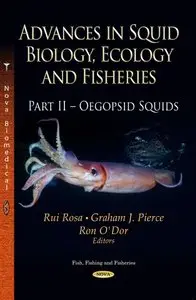Advances in Squid Biology, Ecology and Fisheries: Oegopsid Squids (Fish, Fishing and Fisheries) by Rui Rosa, Graham Pierce, Ron O'dor
2013 | ISBN: 1628083336 | English | 281 pages | PDF | 12 MB
2013 | ISBN: 1628083336 | English | 281 pages | PDF | 12 MB
As with the previous volume, the aim of this book is to gather and synthesize the research conducted on the biology (early life history stages, age and growth, maturation and fecundity), ecology (distribution, migrations, diet, predators and parasites) and fisheries (fishing areas, methods, landings, management and stock assessment) of the most economically relevant oegopsid squids. This squid group dominates the pelagic, oceanic environment and large populations (namely of ommastrephids) are characteristic of the productive shelf-break oceanic boundary currents and upwelling systems, where they normally occupy epi- and mesopelagic depths. Little is known about the spawning and embryonic development of these pelagic squids. They spawn in the relatively inaccessible open sea and extrude the eggs in large gelatinous neutrally buoyant egg masses. Oegopsids play a key role on the vertical energy flow of oceanic ecosystems, acting as an important part of the biological pump from the surface to deeper waters. In fact, some species show a typical daily behavior that involves vertical migrations from near-surface waters at nighttime to mesopelagic depths above or within oxygen minimum zones during the daytime. In addition to the critical role both as prey and predator in the open ocean, some species are the target of some of the world’s largest invertebrate fisheries.



